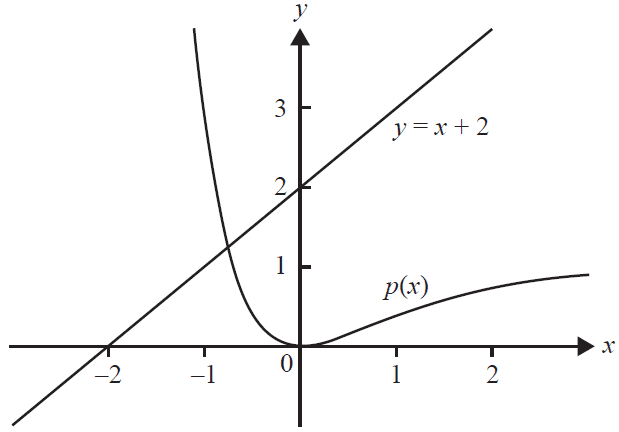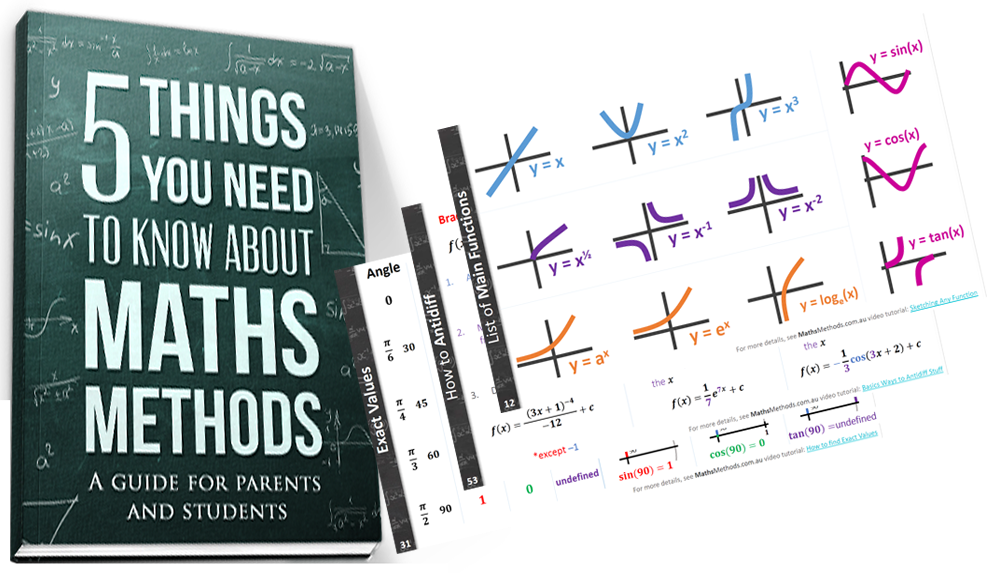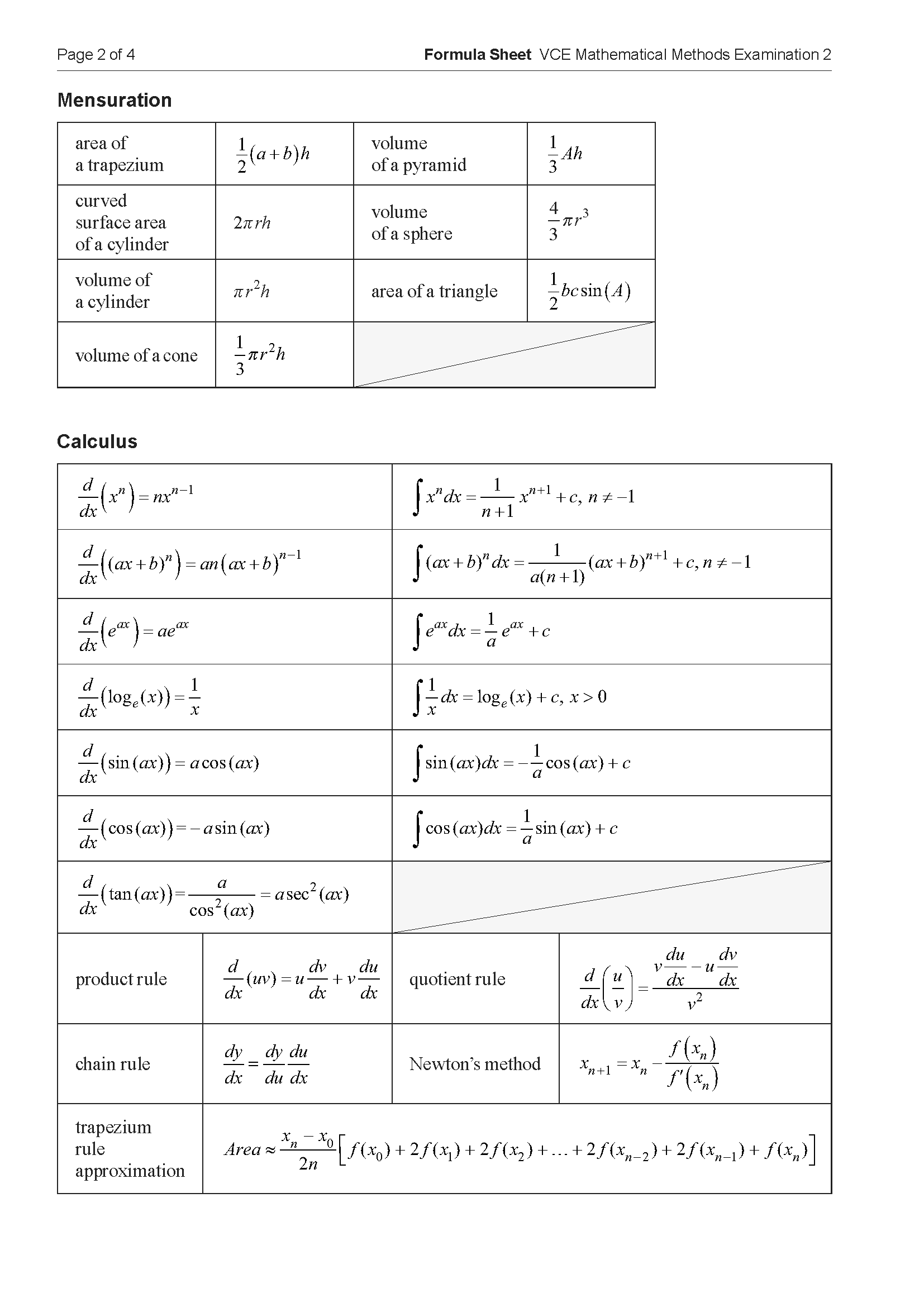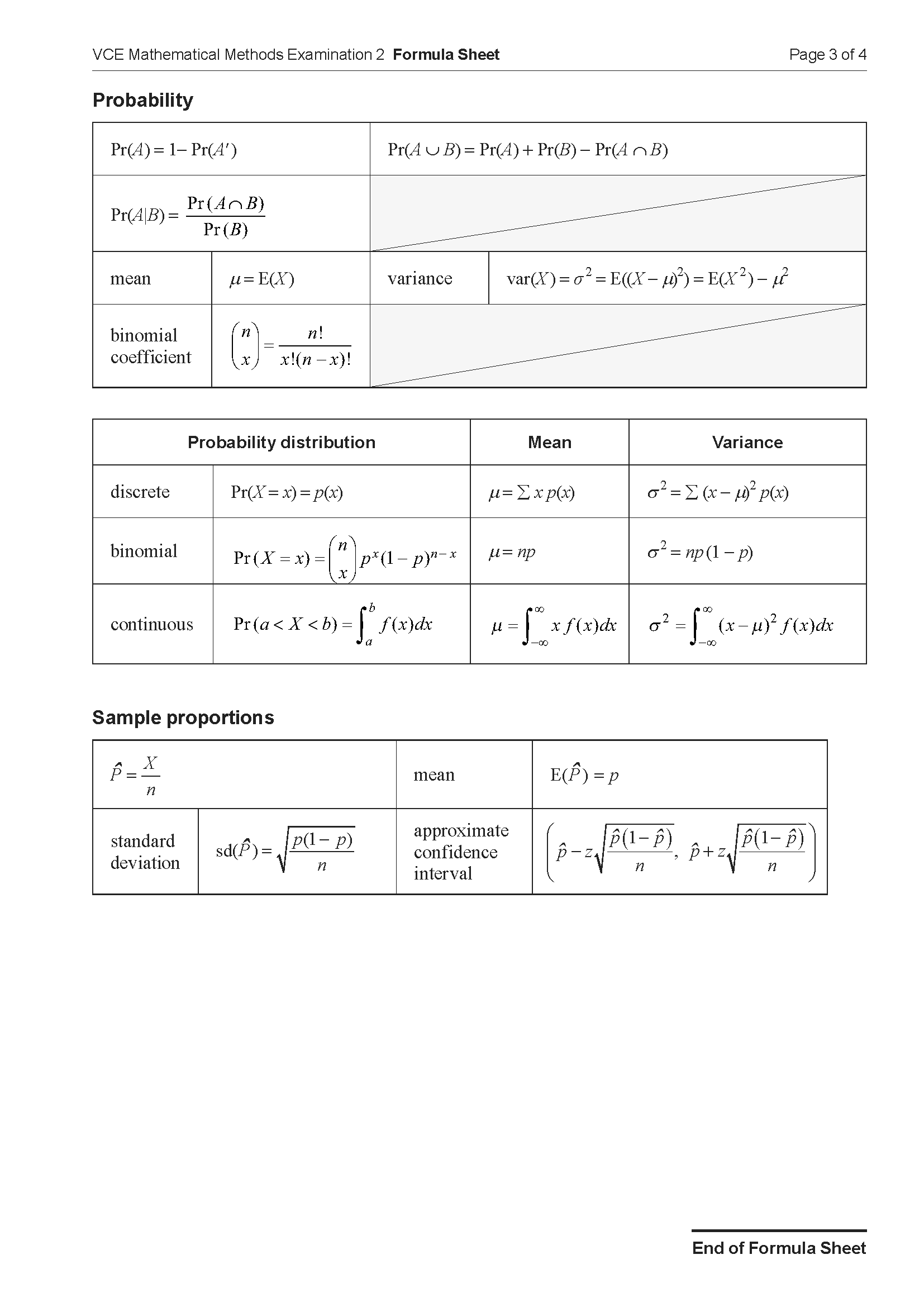VCE Methods Integral Calculus Application Task 8
Number of marks: 12
Reading time: 2 minutes
Writing time: 18 minutes
Section B – Calculator Allowed
Instructions
• Answer all questions in the spaces provided.
• Write your responses in English.
• In questions where a numerical answer is required, an exact value must be given unless otherwise specified.
• In questions where more than one mark is available, appropriate working must be shown.
• Unless otherwise indicated, the diagrams in this book are not drawn to scale.
Let \(q(x) = \log_e(x^2 - 1) - \log_e(1 - x)\).
a. State the maximal domain and the range of \(q\). 2 marks
b.
i. Find the equation of the tangent to the graph of \(q\) when \(x = -2\). 1 mark
ii. Find the equation of the line that is perpendicular to the graph of \(q\) when \(x = -2\) and passes through the point \((-2, 0)\). 1 mark
Let \(p(x) = e^{-2x} - 2e^{-x} + 1\).
c. Explain why \(p\) is not a one-to-one function. 1 mark
d. Find the gradient of the tangent to the graph of \(p\) at \(x = a\). 1 mark
The diagram below shows parts of the graph of \(p\) and the line \(y = x + 2\).

The line \(y = x + 2\) and the tangent to the graph of \(p\) at \(x = a\) intersect with an acute angle of \(\theta\) between them.
e. Find the value(s) of \(a\) for which \(\theta = 60^\circ\). Give your answer(s) correct to two decimal places. 3 marks
f. Find the x-coordinate of the point of intersection between the line \(y = x + 2\) and the graph of \(p\), and hence find the area bounded by \(y = x + 2\), the graph of \(p\) and the x-axis, both correct to three decimal places. 3 marks
End of examination questions
VCE is a registered trademark of the VCAA. The VCAA does not endorse or make any warranties regarding this study resource. Past VCE exams and related content can be accessed directly at www.vcaa.vic.edu.au


